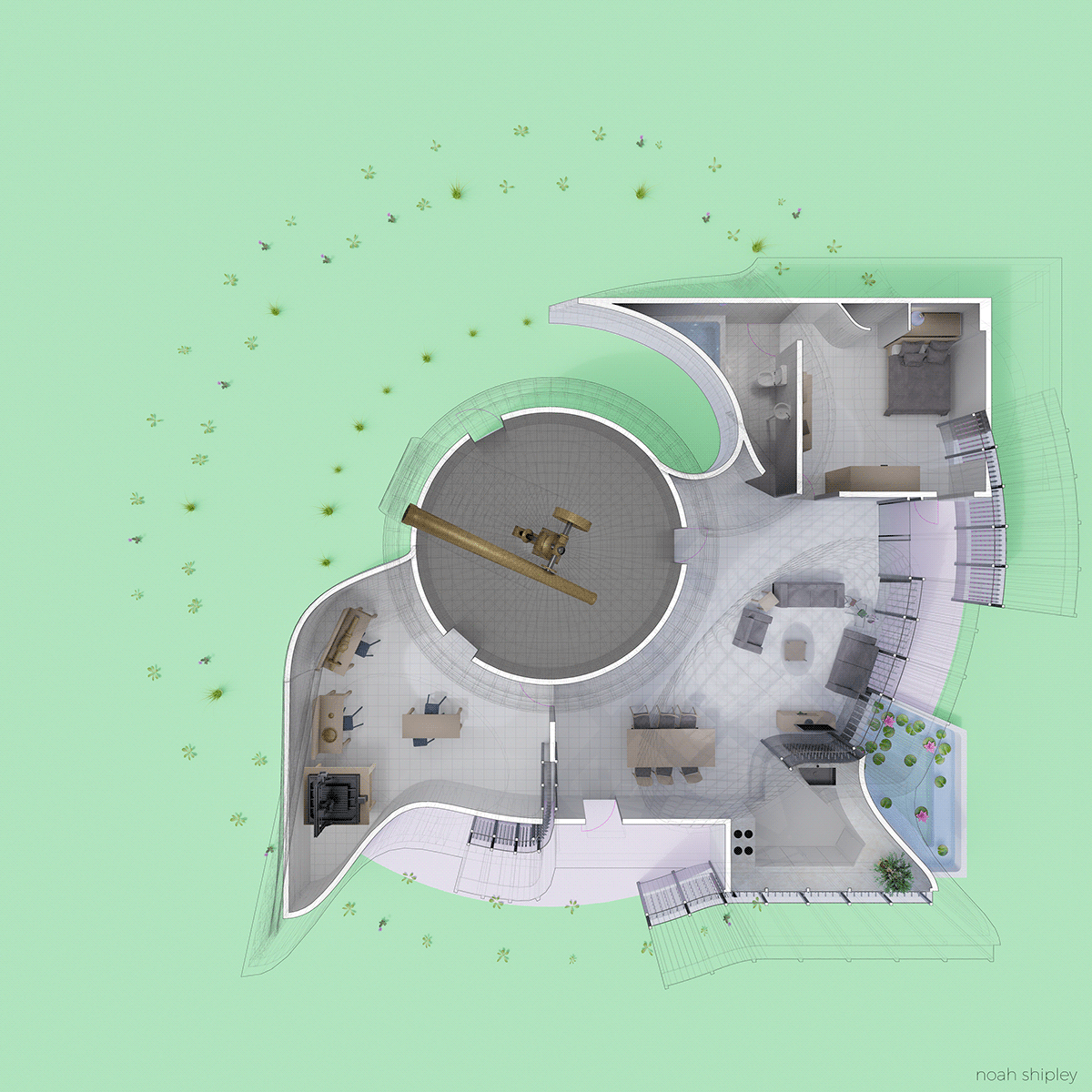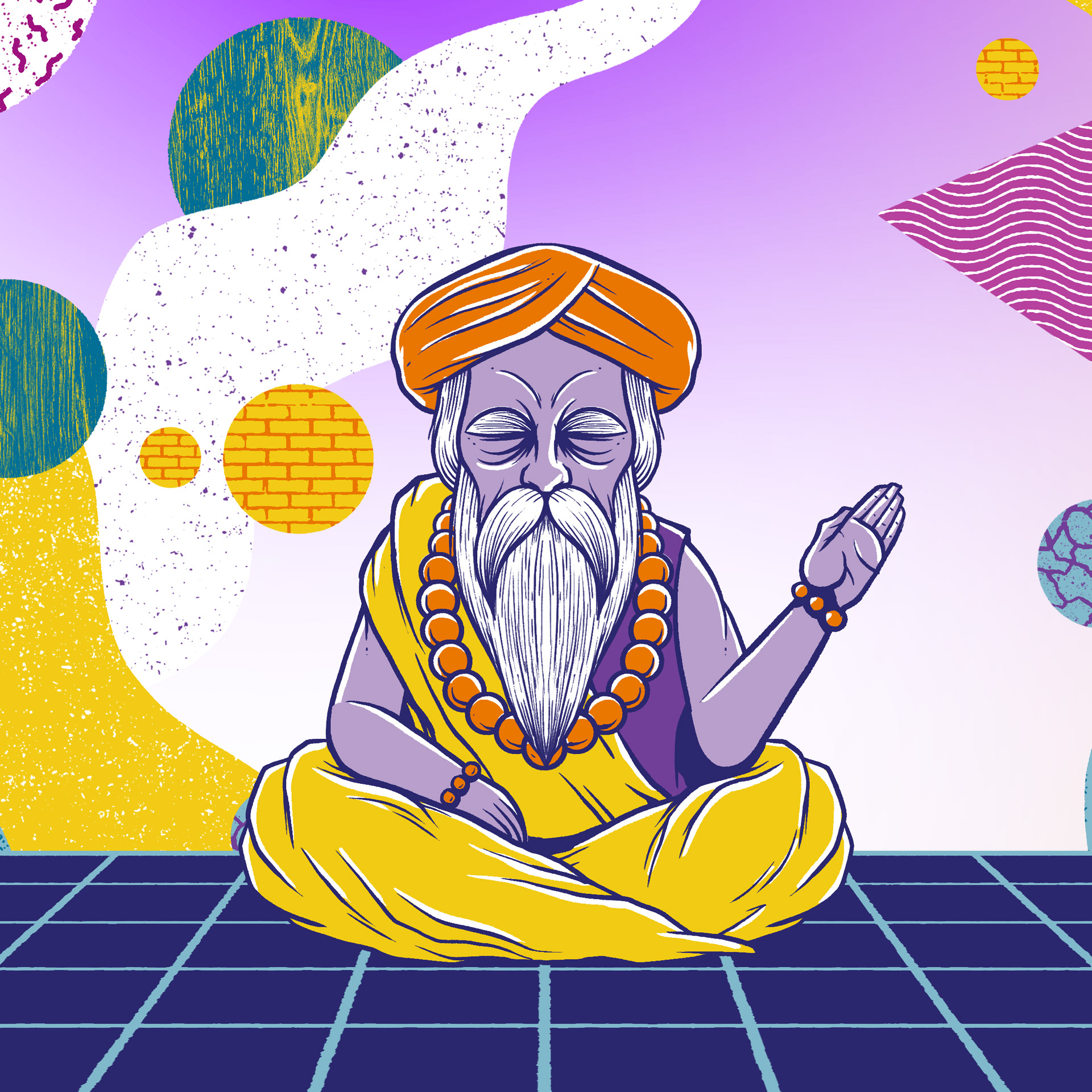This is a house for an astronomer.

Going clockwise, rooms shown are bathroom, bedroom, living room, kitchen, dining room, work room, and observatory
In olden times astronomers harvested the silk of spiders for use in their telescopes. Because of its extraordinary strength and slenderness, spider silk enabled astronomers to create miniature, perfectly straight grids on the telescope's lenses. These grids allowed astronomers to precisely track the movement of stars, which could then be used to create standardized time frames.

This project aims to confront the astronomer with the material roots that make his practice possible in the first place. Interspersed throughout the project are areas for spiders and grids.

Hybrid drawing composed of telescopes, spiders, grids, and stars
Parallel vs. point projection of the cloth grid.
During the day, a cloth provides shade for the living room. At night however, an overhead lamp projects the cloth's grid onto every surface of the room. As the cloth flaps, the grid moves in and out of rectilinearity.
From the outside we see the cloths of the spider areas gently swaying in the wind.
Moving closer, we see numerous orb weavers nestled among the cylinders. These cylinders provide scaffolds on which the spiders can spin their webs, and at night glow with an internal light.
Panoramic perspective of stars and house.
As the days pass in the astronomer's house, the stars move overhead in an endless cycle.
Studies and Sketches



An early study in hatching, details of hybrid drawing.

Pen plotter drawing examining fields vs. form, digital materiality, and circular motion. Drawing was used as inspiration for the floor plan.
Digital simulation of a "cloth"
Studies in simulated liquid, form, and texture
Studies in simulated liquid, form, and texture






